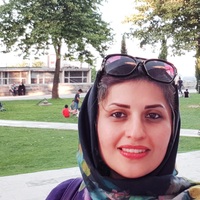Hamid Azizi - Academia.edu (original) (raw)

Graduated with a PhD degree from University of Tehran in Archaeology. Interested in Household, Social and Spatial Archaeology.
less
Related Authors
Uploads
Papers by Hamid Azizi
According to many researchers and scholars, religious beliefs can be considered as the most influ... more According to many researchers and scholars, religious beliefs can be considered as the most influential factor in forming Muslim urban spaces and their architectural elements. In fact, historical cities reflect the culture and beliefs of their residences. Among all historical places in Iranian cities, the historical texture of the city of Yazd, especially the quarters since the age of Qajar dynasty, are well preserved. The present study aims at identifying the Islamic principles and values influencing the formation of architectural spaces and the extent of their applications in one of the historical quarters known as Golchinan. The results of the conformation of the theoretical findings with the data acquired from field studies revealed that almost 90% of the urban and architectural spaces (e.g. residential areas, mosques, bazaars, and pathways) in Yazd are directly influenced by Islamic principles. In other words, there is a strong conformity between the accepted Islamic values of the society and what actually was applied to urban constructions during Qajar dynasty.
Since the study of remaining spaces from the past could lead to a vivid understanding of the poli... more Since the study of remaining spaces from the past could lead to a vivid understanding of the political, administrative , social, economic, and cultural structures of the societies which have created them, the issue of space has turned into a priority in archaeological studies. Therefore, spatial archaeology as an interdisciplinary science can play an important role in reconstructing of the spatial system of historical cities and understanding the behavior of the people who lived in the past. This study is an attempt to open a new investigation into the role of various social classes in the formation of spatial organization of historical cities of Iran during late Islamic period (Qajar era from 1785 to 1925). The study targeted Golchinan district of the city of Yazd, Iran, in Qajar period. The results showed that economic factors have played a leading role in the spatial organization of the district. In fact, due to a higher power, the wealthy class has benefited from a series of economic, social, and spatial advantages that the ordinary people were deprived of. This issue has affected the spatial organization of the district. Also the financial prosperity of the residents had significantly affected the spatial distribution of residential units. In other words, economic differences had led to social classification resulting in better access for the rich to the public facilities. These would make the aristocratic class keep on the side of the power centers.
According to many researchers and scholars, religious beliefs can be considered as the most influ... more According to many researchers and scholars, religious beliefs can be considered as the most influential factor in forming Muslim urban spaces and their architectural elements. In fact, historical cities reflect the culture and beliefs of their residences. Among all historical places in Iranian cities, the historical texture of the city of Yazd, especially the quarters since the age of Qajar dynasty, are well preserved. The present study aims at identifying the Islamic principles and values influencing the formation of architectural spaces and the extent of their applications in one of the historical quarters known as Golchinan. The results of the conformation of the theoretical findings with the data acquired from field studies revealed that almost 90% of the urban and architectural spaces (e.g. residential areas, mosques, bazaars, and pathways) in Yazd are directly influenced by Islamic principles. In other words, there is a strong conformity between the accepted Islamic values of the society and what actually was applied to urban constructions during Qajar dynasty.
Since the study of remaining spaces from the past could lead to a vivid understanding of the poli... more Since the study of remaining spaces from the past could lead to a vivid understanding of the political, administrative , social, economic, and cultural structures of the societies which have created them, the issue of space has turned into a priority in archaeological studies. Therefore, spatial archaeology as an interdisciplinary science can play an important role in reconstructing of the spatial system of historical cities and understanding the behavior of the people who lived in the past. This study is an attempt to open a new investigation into the role of various social classes in the formation of spatial organization of historical cities of Iran during late Islamic period (Qajar era from 1785 to 1925). The study targeted Golchinan district of the city of Yazd, Iran, in Qajar period. The results showed that economic factors have played a leading role in the spatial organization of the district. In fact, due to a higher power, the wealthy class has benefited from a series of economic, social, and spatial advantages that the ordinary people were deprived of. This issue has affected the spatial organization of the district. Also the financial prosperity of the residents had significantly affected the spatial distribution of residential units. In other words, economic differences had led to social classification resulting in better access for the rich to the public facilities. These would make the aristocratic class keep on the side of the power centers.









